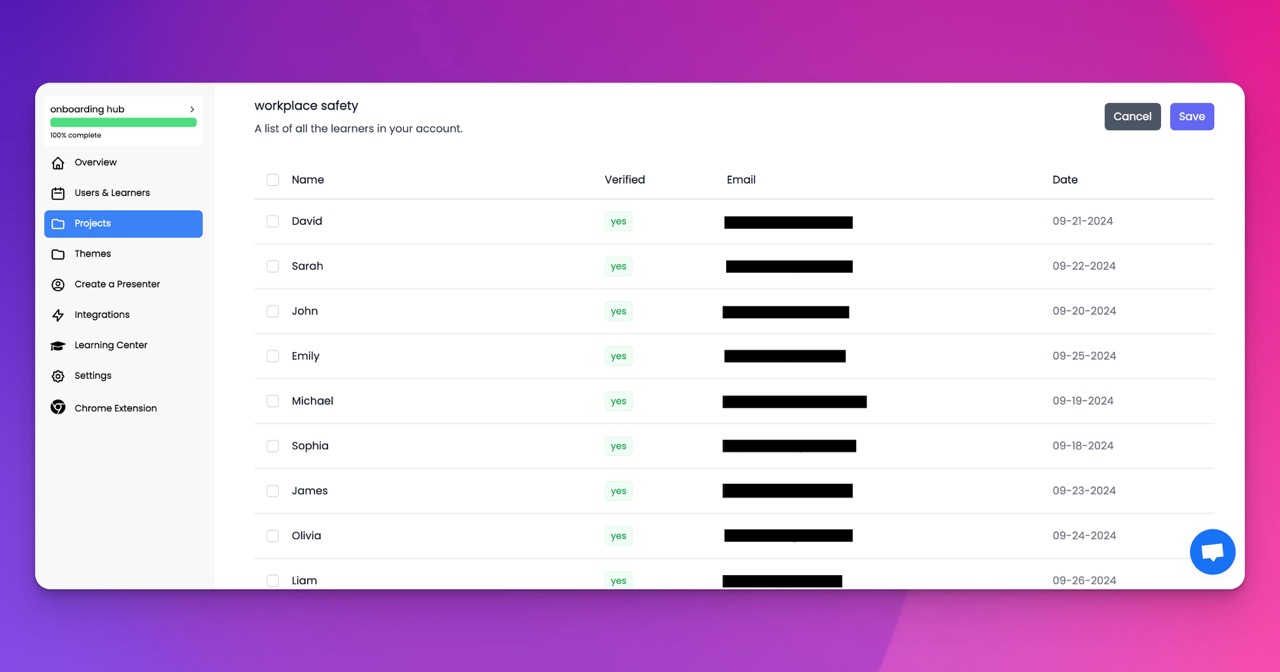🎉 Trainday now integrates with Zendesk and Hubspot 🎉 Trainday now integrates with Zendesk and Hubspot 🎉 Trainday now integrates with Zendesk and Hubspot
🎉 Trainday now integrates with Zendesk and Hubspot
🎉 Trainday now integrates with Zendesk and Hubspot
Contact
The Bedrock of Safety: Implementing Data-Informed Training Strategies in Mining
In the mining sector, where safety is paramount, the implementation of data-informed training strategies has become the bedrock of maintaining and improving safety standards. "The Bedrock of Safety" delves into how mining companies are leveraging data from various sources to enhance their training programs, ensuring that they address the specific challenges and hazards of mining operations. This blog post examines the transformative impact of data-driven insights on safety training, emphasizing their role in reducing risks and safeguarding the workforce.
Strategic Use of Data to Enhance Safety Training
Effective safety training in mining requires a comprehensive understanding of the risks involved, which can be systematically assessed through data analysis.
Incident and Accident Data Analysis
Analyzing incident and accident reports is crucial for identifying the most common and severe risks within mining operations. This data allows companies to pinpoint areas where safety training is lacking or needs reinforcement, such as in the use of heavy machinery or handling of explosives.
Feedback from Mining Personnel
Gathering and integrating feedback from on-site personnel provides invaluable insights that can further refine training programs. Miners often have first-hand knowledge of the everyday risks and operational challenges that may not be fully captured in formal data collection. This feedback is essential for developing practical and applicable safety training.
Tailoring Training Modules Based on Data
Armed with detailed risk assessments, mining companies can create training modules specifically designed to address identified safety issues.
Scenario-Based Training
Developing training scenarios based on actual situations encountered in mining operations enhances the practical application of safety protocols. These scenarios help workers practice their responses to potential emergencies in a controlled, educational environment, which is critical for preparing them to handle real-life situations.
Focused Skill Development
Data often reveals specific operational tasks that are associated with higher risks. Specialized training modules can then be developed to address these tasks, focusing on enhancing the necessary skills to perform them safely. For instance, if data shows a high incidence of injuries from equipment mishandling, targeted training can be provided on proper equipment operation and maintenance protocols.
Continuous Improvement and Adaptation of Training Programs
A data-driven approach allows for the continuous updating and improvement of training programs to adapt to new challenges and ensure ongoing effectiveness.
Regular Updates and Refinements
As mining operations evolve and new technologies are introduced, safety training programs must also be updated. Regularly incorporating new data into training strategies ensures that they remain relevant and effective, covering the latest operational practices and safety technologies.
Proactive Hazard Management
Utilizing predictive analytics to identify potential future risks enables companies to implement preventive measures through training before incidents occur. This proactive approach to safety training helps minimize risks and promotes a safer working environment.
Enhancing Compliance and Streamlining Documentation
Data-informed training strategies not only improve safety outcomes but also ensure compliance with regulatory standards and streamline documentation processes.
Ensuring Regulatory Compliance
By aligning safety training with the latest regulations and using data to continually refine these programs, mining companies can ensure they meet all legal and regulatory requirements, minimizing the risk of non-compliance penalties.
Detailed Record-Keeping
Effective data management enhances the ability to keep detailed records of all training activities, including attendance, content covered, and assessments of training effectiveness. These records are vital for audits and inspections and demonstrate the company's commitment to maintaining high safety standards.
Conclusion
"The Bedrock of Safety: Implementing Data-Informed Training Strategies in Mining" underscores the importance of data in shaping effective and responsive safety training programs within the mining industry. By leveraging detailed insights from various data sources, mining companies can tailor their training programs to meet the specific needs of their operations, significantly enhancing safety and reducing the likelihood of accidents. This approach not only protects workers but also contributes to the overall success and sustainability of mining operations.
Accelerate Compliance.
Deliver OSHA-Ready Courses Instantly.
Empower your team with data-driven training solutions tailored to your industry's safety standards. Stay compliant, reduce risks, and boost productivity with AI-powered course creation.
